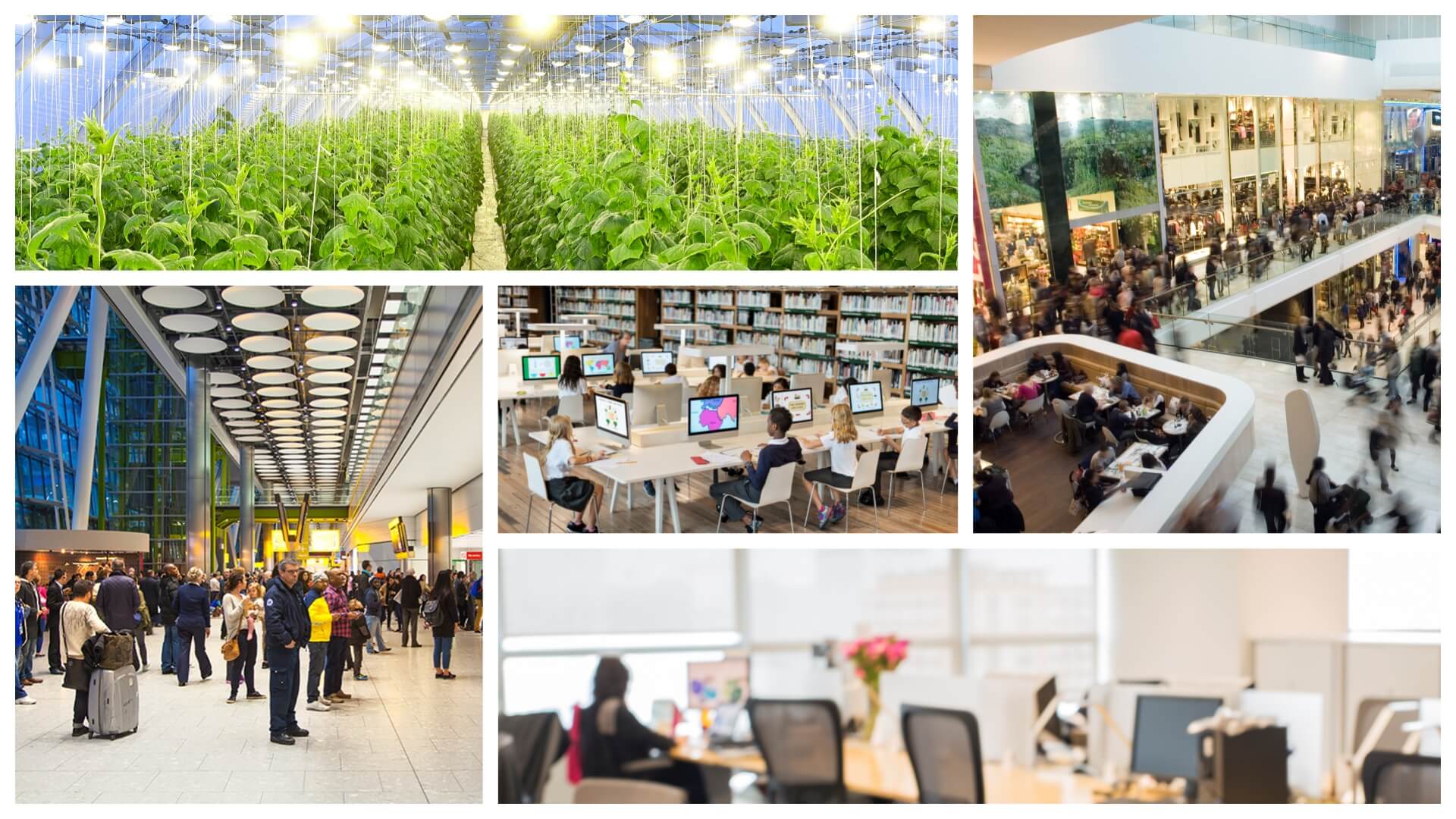A carbon dioxide CO2 monitor is a device that continuously measures, displays, or outputs theco2 concentration in the air, operating 24/7 in real time. Its applications are wide-ranging, including schools, office buildings, airports, exhibition halls, subways, and other public places. It is also crucial in agricultural greenhouses, seed and flower cultivation, and grain storage, where preciseco2 control is needed to regulate ventilation systems orco2 generators. In homes and offices—such as bedrooms, living rooms, and meeting rooms—CO2 monitors help users know when to ventilate by opening windows.
Why Monitor co2 in Real Time?
Although co2 is not toxic, high concentrations in poorly ventilated or enclosed spaces can negatively affect human health. Effects include:
Fatigue, dizziness, and lack of focus.
Breathing discomfort at levels above 1000 ppm.
Severe health risks or even life-threatening danger at extreme concentrations (above 5000 ppm).
Benefits ofco2 monitoring include:
Maintaining good indoor ventilation.
Improving productivity and concentration.
Preventing health issues linked to poor air quality.
Supporting green building certifications.
CO2 Reference Levels (ppm):
|
CO2 Concentration
|
Air Quality Assessment
|
Advice
|
|
400 – 600 |
Excellent (outdoor standard) |
safe |
|
600 – 1000 |
Good) |
acceptable indoors |
|
1000 – 1500 |
Moderate, |
ventilation recommended |
|
1500 – 2000+ |
Poor,health impact likely |
urgent ventilation needed |
|
>5000 |
Dangerous |
evacuation required |
What is Commercial co2 Monitor?
A commercialco2 monitor is a high-precision device designed for business and public spaces. Beyondco2, it can also integrate measurements of temperature, humidity, TVOCs (total volatile organic compounds), and PM2.5, enabling comprehensive indoor air quality monitoring and management.
Why Install co2 Monitors in Commercial Spaces?
High occupancy & variable density: Monitoring allows for demand-based fresh air distribution and optimized ventilation system operation.
Energy efficiency: Data-driven HVAC system management ensures health while reducing energy waste.
Compliance: Many countries requireco2 monitoring as part of their indoor air quality standards, particularly in the education, healthcare, and transportation sectors.
Corporate sustainability & image: Displaying air quality data or integrating it into building automation enhances green and healthy building credentials.

Deployment Guidelines for Commercial Spaces
Install multiple monitors based on occupancy density for comprehensive coverage.
Independent rooms should have dedicated monitors; open areas typically require one device per 100–200 square meters.
Integrate with Building Automation Systems (BAS) for real-time HVAC control and management.
Use centralized cloud platforms to monitor multiple sites.
Generate regular air quality reports for ESG compliance, green certifications, and government inspections.
Conclusion
CO₂ monitors are now standard tools for indoor environmental management. They safeguard health in workplaces and help achieve energy efficiency. With the rising emphasis on “healthy workplaces” and “carbon neutrality,” real-timeco2 monitoring has become an essential component of sustainable development and green building practices.
Post time: Aug-20-2025


